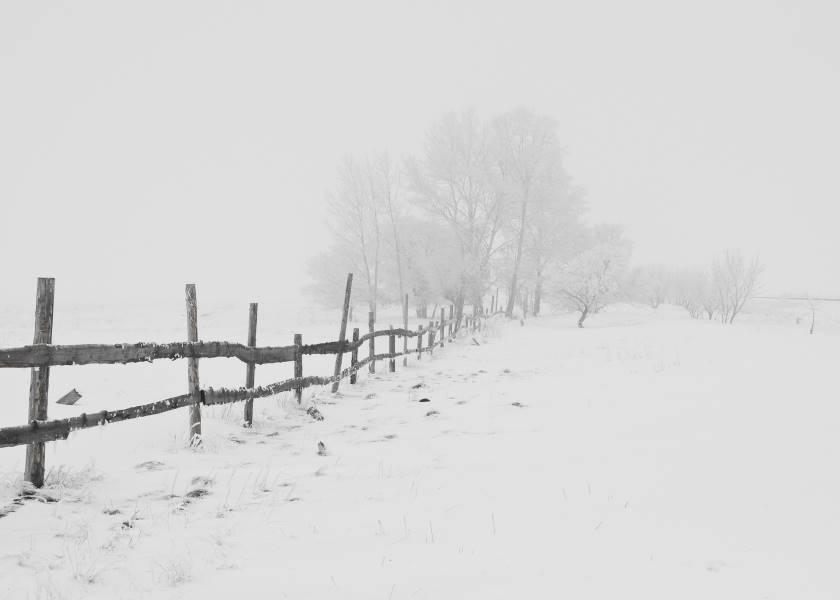Winter Storms Are On the Way: Are Your Barns Safe?

Winter Storm Landon is on its way, expected to spread a big mess of snow, sleet and freezing rain from the Rockies to the Plains, Midwest and parts of the Northeast as February begins.
For farmers in some areas, the predictions of 12 to 18 inches of snow carry all of the “typical” concerns plus more. Large snowfalls require extra diligence to keep animals safe and warm, not to mention maintaining agricultural building integrity.
Snow and ice accumulations can cause roofs to collapse when the roof is not strong enough to resist the load. If you need to remove snow from a roof, use extreme caution.
"More often than not, attempting to remove snow from a roof is more hazardous than beneficial, posing a risk to both (people) and the roofing structure," the Federal Emergency Management Agency says in the Snow Load Safety Guide.
Removing snow from roofs is dangerous – not only because of the risk of falling, but it also can allow the snow up slope to suddenly slide down, burying people or animals below. Use a roof rake from a safe distance away to help lower the risk to the person removing the snow.
When snow adds up
FEMA says there are many factors that go into "snow-induced structural failures," including a roof's shape, slope, construction, maintenance, exposure to wind and the type of snow that has accumulated.
Fresh, fluffy snow can weigh as little as 3 lb. per square foot compared with 21 lb. for wet, heavy snow, FEMA reports. Ice weighs even more coming in at 57 lb. a square foot. When considering the size of most farm buildings, it’s easy to see how the weight of snow and ice can add up to dangerous sums fast.
Use caution when removing snow
Brian Holmes, professor emeritus at the University of Wisconsin-Madison, offers some precautions when removing snow from a roof:
• Hire a structural engineer to look at the roof system to see if corrosion or rot has weakened the structure.
• Ask a structural engineer to look at the roof system to see if sufficient bracing has been installed during construction.
• Producers with very large roofs could ask the fire department to spray water onto the roof to melt the snow and encourage it to slide from the roof. This would have to be done strategically so the water doesn't build up in the snow, increasing the load on the roof and causing a failure due to the process.
• In uninsulated sheds, use a portable heater to warm the interior and encourage snow to slide off the roof so you don’t have to manually remove it. Unvented heaters can cause oxygen depletion and carbon monoxide accumulation in an unventilated space. Carefully ventilate the warmed shed before reentering.
• Use a snow roof rake if possible. This allows you to stand on the ground in a safe place. These are typically available at the local hardware store or building supply store. Removing snow from the edge of the roof could allow snow above the edge to avalanche. Avoid the fall zone when scraping snow from a smooth roof surface.
• Use fall protection equipment when workers are on the roof. Use safety harnesses so workers don’t fall from the roof.
• If ladders are used, locate and secure them so they do not fall while workers are standing on them. Position ladders so they do not fall if snow slides off the roof, knocking workers off the ladder or leaving them stranded on the roof.
• Generally remove snow from the most heavily loaded areas first.
• Remove snow in narrow strips instead of large areas to help keep loading somewhat uniform.
• Don’t pile removed snow onto snow-covered roof areas increasing the load in those areas.
• Use plastic shovels or wooden roof rakes to avoid damaging roofing material.
• It’s ok if you don’t remove all the snow. A layer of snow next to the roof surface can protect the surface from damage during the snow removal process.
• Do not pick or chip at ice near the roof surface to avoid damaging roofing material.
• Do not use snow blowers as they can damage the roof.
Warning signs of overstress conditions
Overstressed roofs typically display some warning signs. Wood and steel structures may show noticeable signs of excessive ceiling or roof sagging before failure. The following warning signs are common in wood, metal, and steel constructed buildings:
• Sagging ceiling tiles or boards, ceiling boards falling out of the ceiling grid, and/or sagging sprinkler lines and sprinkler heads
• Sprinkler heads deflecting below suspended ceilings
• Popping, cracking, and creaking noises
• Sagging roof members, including metal decking or plywood sheathing
• Bowing truss bottom chords or web members
• Doors and/or windows that can no longer be opened or closed
• Cracked or split wood members
• Cracks in walls or masonry
• Severe roof leaks
• Excessive accumulation of water at nondrainage locations on low slope roofs
Read More:
7 Smart Steps to Prepare Your Swine Barn Equipment for Winter







